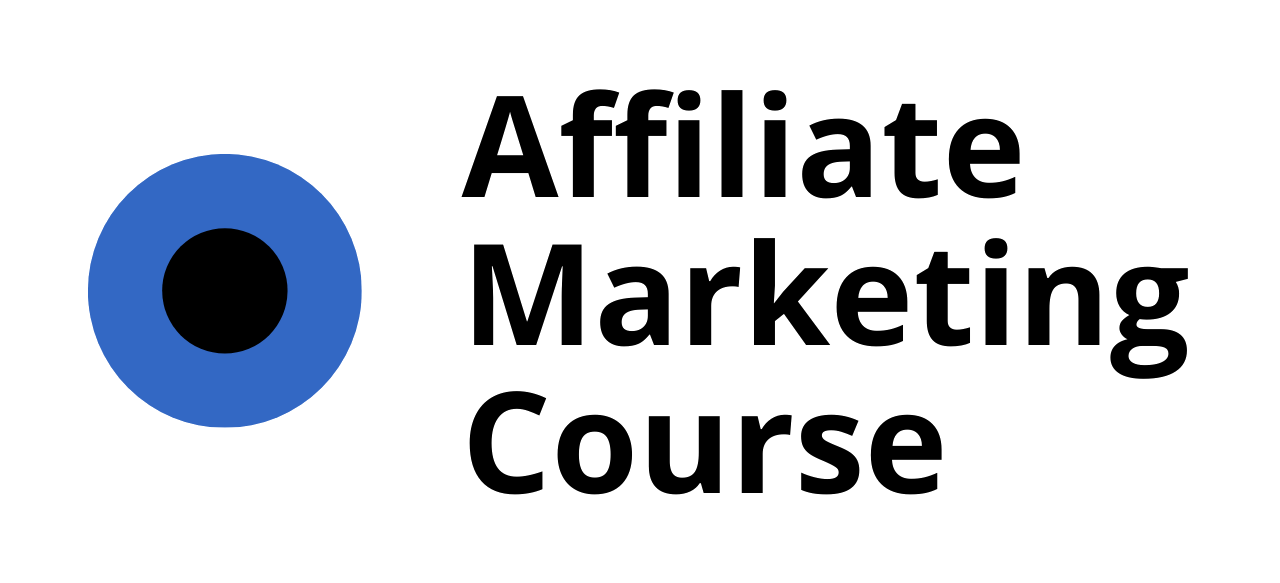Are you looking to unlock the full potential of affiliate marketing but unsure where to begin? Imagine the possibility of earning a sustainable income, even reaching heights like $10,000 a month, all while collaborating with trusted brands. However, achieving these milestones requires the perfect strategy, and that’s where affiliate marketing landing pages come into play. Whether you’re new to affiliate marketing or seeking to refine your current approach, understanding the role of landing pages is essential. But wait, what exactly is a landing page, and why does it matter in the world of affiliate marketing? Can you truly succeed without one, or is a well-crafted landing page the secret sauce to your success? In this article, we’ll explore these questions and more, providing you with actionable insights, real-life examples, and expert tips to create landing pages that convert visitors into paying customers and loyal affiliates. From defining what a landing page is to comparing its effectiveness against traditional websites, we’ll cover everything you need to know to optimize your affiliate marketing efforts and maximize your earnings.
Key Takeaways
– Landing Pages Drive Focused, High-Converting Campaigns: Ideal for targeted promotions and budget-friendly setups, landing pages maximize impact with specific offers.
– Websites Build Scalable Brands: Offering a professional presence, SEO benefits, and content hubs, websites support long-term growth and multiple products.
– Choose Platforms Wisely: Optimize your affiliate marketing by selecting platforms like Amazon Associates, ShareASale, or ClickBank based on your product type.
– Understand Affiliate Risks: Be prepared for challenges like dependency on traffic, unethical practices, and competition to refine your strategy effectively.

What is a Landing Page for Affiliate Marketing?
A landing page for affiliate marketing is a specialized webpage designed to attract potential affiliates to join your affiliate program and encourage them to become active participants. This page serves as the entry point for affiliates, providing them with essential information about your program, its benefits, and how they can benefit from it.
Key Components of an Effective Affiliate Marketing Landing Page
- Compelling Headline : The headline should grab attention and clearly state the value proposition of your affiliate program. For example, “Join Our Affiliate Program and Earn Passive Income.”
- Program Overview : Provide a brief description of your affiliate program, including details about commission rates, payment methods, and the types of products or services you promote.
- Benefits of Joining : Highlight the advantages of becoming an affiliate, such as earning commissions, accessing promotional materials, and gaining access to a dedicated support team.
- Call-to-Action (CTA) : Include prominent buttons or links that allow affiliates to sign up for your program. Examples: “Become an Affiliate Now” or “Apply Today.”
- Trust Elements : Display trust signals like security badges, customer reviews, or partnerships with known brands to reassure affiliates of your program’s legitimacy.
- Testimonials : Showcase quotes from existing affiliates who have successfully earned money through your program, along with their success stories.
- FAQ Section : Address common questions affiliates might have, such as payment timelines, approval criteria, and program policies.
- Performance Tracking : Offer tools or dashboards where affiliates can monitor their earnings, conversion rates, and other key metrics.
Examples of Affiliate Marketing Landing Pages
- ShareASale Affiliate Program : Known for its extensive network and flexible commission structures, ShareASale provides a robust platform for affiliates to promote various products.
- ClickBank Affiliate Program : Specializes in digital products, offering high commission rates and a user-friendly interface for affiliates.
- Amazon Associates : Amazon’s affiliate program allows individuals to earn commissions by promoting Amazon products.
Optimization Tips
- Mobile Responsiveness : Ensure your landing page is optimized for mobile devices, as many users access websites via smartphones.
- Keyword Optimization : Use relevant keywords in your content and headings to improve your page’s visibility in search engine results.
- Clear Value Proposition : Make it crystal clear why affiliates should choose your program over others.
- Fast Loading Times : Optimize images and scripts to ensure quick loading speeds, which improves user experience and conversion rates.
By creating an effective affiliate marketing landing page, you can significantly boost your recruitment of high-quality affiliates and drive your program’s success. Remember, the goal is to provide a seamless and engaging experience that encourages affiliates to join and thrive within your program.
Can You Make $10,000 a Month with Affiliate Marketing?
Yes, it’s possible to earn $10,000 or more per month through affiliate marketing with consistent effort and strategic planning. Affiliate marketing offers a lucrative income opportunity, but success requires dedication, expertise, and a well-executed strategy. Below are key factors that influence affiliate marketing earnings:
- Niche Selection: Choose a niche with high demand and competition. Focus on industries where affiliate programs are abundant, such as digital products, health & fitness, financial services, and SaaS.
- Target Audience: Identify your target audience and create content tailored to their needs. Building trust and providing value is crucial for driving sales and sign-ups.
- Traffic Generation: Consistently drive targeted traffic to your affiliate links. Use a mix of organic SEO, paid advertising, social media, and email marketing to scale your reach.
- Conversion Rates: Optimize your landing pages and sales funnels to maximize conversion rates. Use A/B testing to refine your approach and improve results.
- Promotion Strategies: Leverage social media platforms, influencer partnerships, and content marketing to promote affiliate offers effectively.
To illustrate potential earnings, consider the following examples: – Pat Flynn earns over $50,000 monthly through affiliate marketing in the personal development niche. – Ryan Dean generates approximately $30,000 monthly promoting digital products and services.
Key tips for achieving $10,000+ monthly:1. Choose the right affiliate programs that align with your audience’s interests.2. Leverage social media platforms like Instagram and Pinterest to visually showcase products.3. Build an email list and nurture leads through automated campaigns.4. Create valuable content, such as tutorials and guides, to establish authority and drive traffic.
By implementing these strategies and staying committed, you can achieve significant income through affiliate marketing. Start by enrolling in a comprehensive affiliate marketing course to gain the necessary skills and tools for success.

Can You Do Affiliate Marketing Without a Landing Page?
Yes, it is possible to engage in affiliate marketing without a dedicated landing page. Here are several methods you can use to promote affiliate offers effectively:
- Email Marketing: Create engaging email campaigns that showcase your affiliate links. Build a subscriber list and send regular newsletters featuring product reviews, tips, and exclusive offers.
- Social Media Platforms: Promote affiliate products on platforms like Instagram, TikTok, or YouTube by creating visually appealing content. Share product demonstrations, testimonials, or unboxing videos to attract clicks.
- Start a podcast where you discuss products and include affiliate links in your show notes or transcripts. Engage your audience with conversations about the products you promote.
- Paid Advertising: Use platforms like Google Ads, Facebook Ads, or Amazon Influencer Program to run targeted ads promoting affiliate links. This method allows you to reach a broader audience quickly.
- Sponsored Content Creation: Create content around products you promote, such as YouTube videos or blog posts. Include affiliate links naturally within your content while maintaining transparency with your audience.
- Collaborate with Influencers: Partner with micro-influencers who have a loyal following. They can promote your affiliate links on platforms like Instagram, Pinterest, or YouTube.
- Lead Magnets: Offer free resources or guides in exchange for email sign-ups. Use these leads to promote affiliate offers through email marketing.
- SEO Content Creation: Write articles or blog posts that rank well in search engines. Incorporate affiliate links into these articles to drive organic traffic and earn commissions.
By leveraging these methods, you can effectively promote affiliate products without requiring a traditional landing page. Focus on building trust with your audience and delivering value through your content to maximize your success in affiliate marketing.
Learn more about mastering affiliate marketing techniques .

Is a Landing Page Better Than a Website for Affiliate Marketing?
A landing page and a website each have unique advantages for affiliate marketing, depending on your business goals and needs. Here’s a breakdown:
When to Use a Landing Page:
- Targeted Promotions: Ideal for promoting a single product or service.
- High Conversion Rates: Focuses on a specific offer, reducing distractions.
- Budget-Friendly: Easier and cheaper to set up initially.
- Testing Phase: Great for testing affiliate programs before scaling.
When to Use a Website:
- Scalability: Supports multiple products and services.
- Brand Presence: Establishes a professional online presence.
- SEO Benefits: Can rank for a variety of keywords, attracting broader audiences.
- Content Hub: Allows for blogs, guides, and reviews to drive organic traffic.
Key Considerations:
- Cost and Resources: Websites require ongoing content creation and SEO efforts, which can be resource-intensive.
- Audience Targeting: Landing pages are great for specific campaigns, while websites can cater to broader audiences.
- Scalability: Websites adapt better to growth, allowing for added features and expanded product lines.
Conclusion:
Start with a landing page for focused promotions, then transition to a website as your business expands. This strategy balances initial simplicity with future scalability, helping you grow your affiliate marketing efforts effectively.
The Best Platform for Promoting Affiliate Marketing
Choosing the right platform for affiliate marketing can significantly impact your success. Here are some of the top platforms available:
- Amazon Associates : Known for its extensive product range and established program, Amazon Associates is a popular choice for affiliates promoting a wide array of products.
- ShareASale : One of the oldest affiliate networks, ShareASale offers a variety of tools and supports both new and experienced affiliates with a global reach.
- ClickBank : Specializes in digital products, making it ideal for promoting e-books, online courses, and other digital offerings.
- Ebay Partner Network : Allows affiliates to promote a diverse range of products, catering to both digital and physical goods.
- CJ Affiliate (Rakuten Advertising) : Works with major brands, offering high-commission opportunities and access to a large network of merchants.
- Awin : A global affiliate network with flexible commission structures, connecting affiliates with a wide range of merchants.
- Fiverr Affiliates : Ideal for promoting freelance services, attracting those interested in hiring or working with freelancers.

Is There a Downside to Affiliate Marketing?
Yes, there are several potential downsides to affiliate marketing, despite its popularity and profitability. While it can be a powerful tool for monetization, it’s essential to understand the challenges and pitfalls before diving in.
1. Dependency on Traffic
Affiliate marketing heavily relies on driving targeted traffic to your platform or audience. If you fail to attract visitors, your affiliate revenue will suffer. This dependency can be challenging, especially if you’re promoting a niche product with a small audience.
2. Risk of Unethical Affiliates
While reputable programs screen applicants, there’s always a risk of working with unethical affiliates who may engage in spamming, misleading consumers, or other deceptive practices. This can harm your brand’s reputation and lead to penalties.
3. Limited Control Over Promotions
Affiliates operate independently, and their promotional methods may not align with your brand’s image or messaging. This lack of control can result in inconsistent branding and potentially negative consumer experiences.
4. High Competition
Many established brands already have affiliate programs in place, making it tough for newer players to gain visibility. Competitors might dominate search rankings and capture most of the commissions, reducing your potential earnings.
5. Low Conversion Rates
Even with a large audience, converting visitors into paying customers can be difficult. Many users may click affiliate links out of curiosity but fail to complete purchases, leading to low conversion rates and reduced revenue.
6. Compliance Challenges
Affiliate marketing requires adherence to strict guidelines set by platforms like Google AdSense and Facebook. Violations can result in account suspension and loss of revenue. Staying compliant can be time-consuming and complex.
7. Limited Earnings Potential
While affiliate marketing can be lucrative, it often requires a significant upfront investment in traffic generation. Unless you have a large audience or a robust marketing strategy, your earnings may remain modest compared to other monetization methods.
8. Dependence on Third-Party Platforms
Most affiliate programs operate through third-party networks like Amazon Associates or ShareASale. While these platforms offer convenience, they also introduce limitations, such as commission caps and reliance on their infrastructure.
9. Negative Consumer Perceptions
Consumers are becoming increasingly skeptical of affiliate marketing, viewing promotions as manipulative. This skepticism can reduce trust in your brand and negatively impact conversions.
10. Ongoing Effort Requirement
Affiliate marketing is not a passive income source. It demands continuous effort to attract new affiliates, monitor performance, and adapt to changing trends. This commitment can be overwhelming for those seeking a hands-off approach.
Conclusion
Affiliate marketing offers numerous benefits, but it also comes with notable downsides. To succeed, evaluate your goals, target audience, and resources. Work with reputable programs, maintain ethical standards, and continuously optimize your strategy to overcome these challenges.




0 Comments